Surprising Political Divides, and More – Toronto News
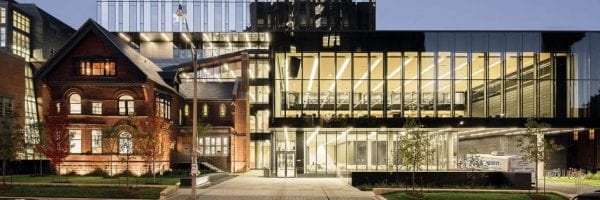
Toronto’s finest business schools have seen some exciting developments this week, including new research from Rotman on the U.S. political divide. Check out some of this week’s highlights below.
Like Race and Class, Commute and Homeownership Divide Us – CityLab
Richard Florida, Professor at University of Toronto’s Rotman School of Management and co-founder and editor of CityLab, recently wrote a piece for the publication that detailed how lifestyle and transit decisions impact America’s political divisions. The article references research performed by Florida and urban studies alum and instructor Patrick Adler. Adler’s research found that congressional districts with higher levels of homeownership were more likely to support Trump, as opposed to renters.
The political divide research also found that districts where the majority of people drive to work alone were more likely to vote for Trump, and areas where commutes were mostly via mass transit were likely to oppose his agenda. Perhaps surprisingly, commute and homeownership correlated as heavily with political stance as race and more so than education.
You can read more about Florida and Adler’s political divide research here.
‘Extraordinary’ Gift Will Help Establish Ivey Business Centre for Innovation – The London Free Press
John F. Wood, Western University Canada Ivey Business School 1964 graduate, has donated $7 million to his alma amter. The gift will go toward establishing the John F. Wood Centre for Innovation in Business Learning.
On the announcement, Mark Vandenbosch, Dean of the Ivey Business School, says:
“John’s extraordinarily generous gift will benefit students at Ivey and throughout management education for generations to come.”
For over 30 years, Wood served as president and CEO of W.C. Wood Company Limited, one of the largest manufacturers of freezers, dehumidifiers, and refrigerators in North America. Now, he has utilized the payoff from his years of work to give back to future generations of business students.
According to the London Free Press, Wood’s donation “will also be used to develop new courses and teaching programs, expand Ivey’s educational outreach to secondary school students, provide permanent administrative support for the centre, and establish a global symposium on innovation in business learning.”
You can read more about the donation here.
McMaster’s New Innovation Minor Sees Unexpectedly High Enrollment – Silhouette
This was the first year of the McMaster University Engineering School and the DeGroote School of Business joined to offer an innovation minor. McMaster faculty teamed up with The Forge, a Hamilton startup incubator, to develop the curriculum for the minor.
“The innovation minor is a nexus where academics meet startup culture,” says Monika Yazdanian, Director of The Forge. The minor has far exceeded enrollment expectations, due in part to the breadth of networking opportunities and hands-on learning embedded in the curriculum. Courses rely heavily on guest lecturers and, in their third and fourth years, students even get the opportunity to develop their own startup.
Learn more about McMaster’s innovation minor here.
Are Business School Neighborhoods Becoming More Gentrified?

When universities are found in downtown urban areas, gentrification most often follows. It almost seems inevitable since universities bring in more individuals with higher education, draw in more money, and increase new businesses. But what does the rapid increase of gentrification statistics mean for the business school students looking to start their career in a new area?
What Is Gentrification?
First, we need to look at what gentrification is. In simple terms, it’s the influx of more affluent residents moving into urbanized neighborhoods. At the outset, it may sound good, but it can be controversial.
Gentrification may improve the financial quality of a neighborhood, but it can also force the relocation of current residents and businesses due to increasing costs. Often, the process of gentrification also shifts a neighborhood’s racial and ethnic composition, as well as the average household income. This can lead to community displacement for lower-income families in gentrified areas, some of which often live in the area for several generations.
However, there is a grey area. Gentrification happens when a location becomes increasingly attractive. At that point, more high-income individuals move into the area bringing in investments in the community and leading to improved infrastructure and economic development.
What Causes Gentrification?
According to a recent comprehensive review of gentrification completed by researchers at UC Berkeley and UCLA, gentrification most often occurs when more public transportation is available. People are more attracted to transit hubs because they allow more privileged groups to trade car commutes for transit and signal a large-scale commitment to neighborhood upgrading, which, in turn, leads to increased employment opportunities.
Another spur to gentrification is education. Quality schools, universities, colleges, and medical centers tend to shape gentrification. The substantial federal support that public universities receive brings money into neighborhoods through many means including housing and housing subsidies for faculty and staff. A CityLab study revealed that universities and other academic institutions are key to attracting the creative class, creating more market demand and political pressure for better amenities, schools, and other services.
Analyzing University Neighborhood Gentrification Statistics
Since universities have such an impact on gentrification, we thought we’d take a look at what areas and schools have been most affected. While gentrification is not something most urban areas should aspire for, it happens, and it’s important to know where it’s occurring the most.
To find out, we looked at a recent study by RentCafe of the most gentrified areas in the U.S. The study took a look at the 2000 Census and the 2016 American Community Survey to see the changes that took place over a decade and a half across 1,000 U.S. ZIP codes. The study found that there are easy ways to quantify gentrification statistics when looking at median home value, median household income, and the population that holds a bachelor’s or higher degree.
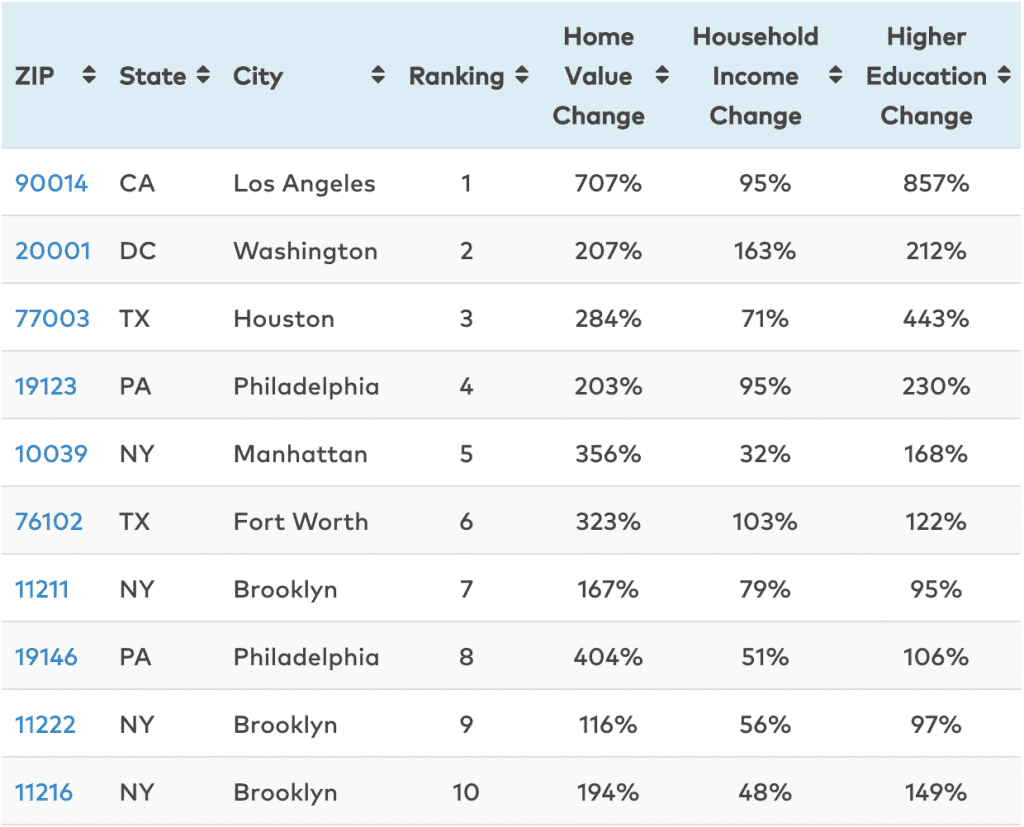
Based on the results of the study, we analyzed the top five MetroMBA universities in gentrified areas.
-
University of Southern California
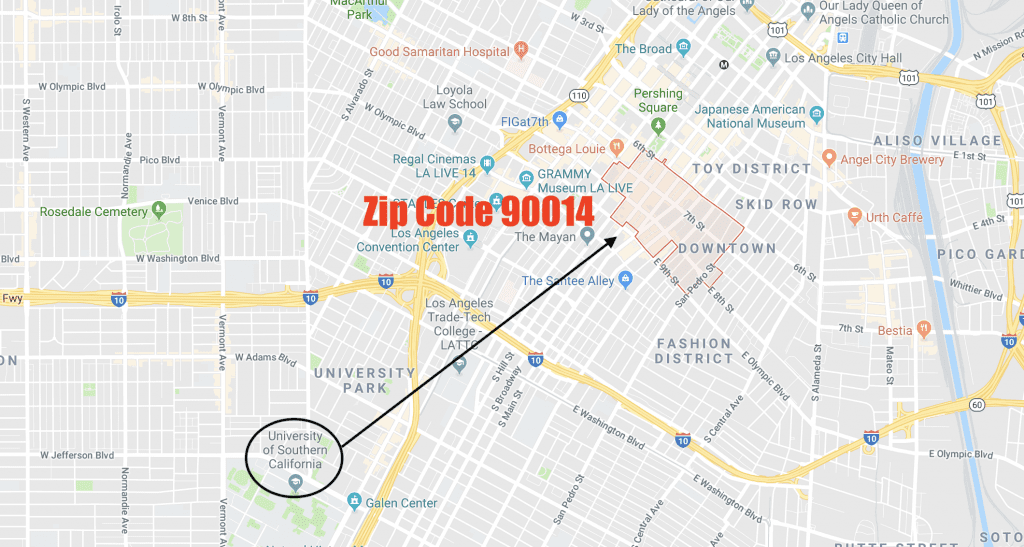
Located less than five miles away from ZIP code 90014 in Los Angeles, USC Marshall is just on the edge of the most gentrified area in the U.S. Over the last 16 years, this area has witnessed:
- A 707 percent increase in home values
- A 95 percent increase in median household income
- And an 857 percent increase in people holding bachelors or higher degrees
So, while some at USC might be fighting gentrification, it may not be working. Just last year, USC opened up a brand-new $700 million USC Village with a Target Express, Trader Joe’s, and 15 restaurants, transforming the surrounding neighborhood. And even though as part of the development USC provided $20 million for construction of off-site subsidized housing, there are still concerns.
“Across the street, land values are going to increase,” Joe Donlin, Associate Director of Strategic Actions for a Just Economy, told KPCC. “We know the landlords are going to rent at higher levels of rent.”
-
Howard University
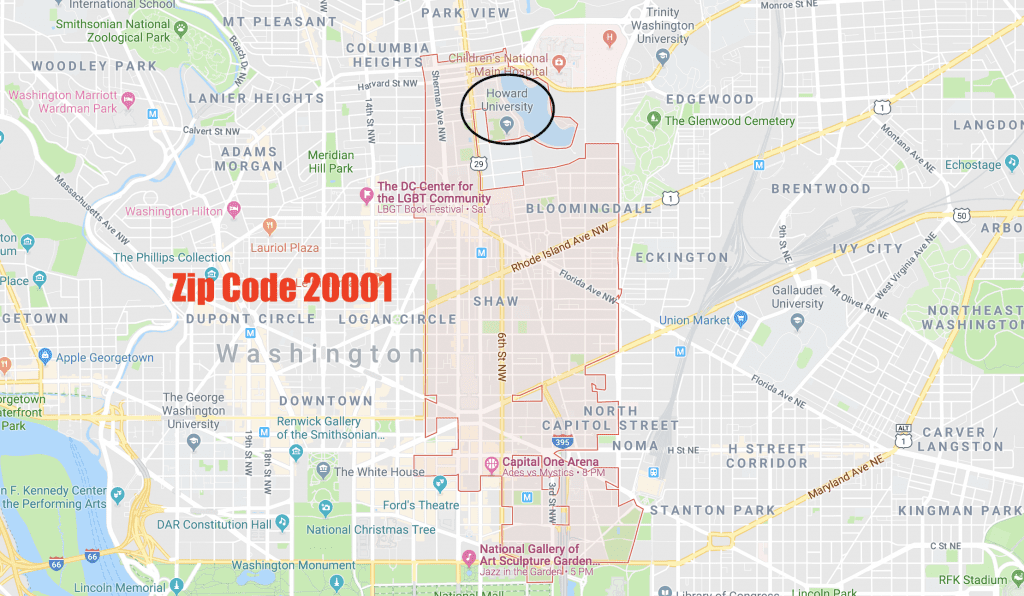
Located in Washington, D.C. Zip Code 20001, Howard University’s campus is located directly in the second most gentrified area in the U.S. Over 16 years, the area has witnessed:
- A 207 percent increase in home values
- A 163 percent increase in median household income
- And a 212 percent increase in people holding bachelors or higher degrees
The gentrification statistics of the Howard University area hasn’t gone unnoticed. According to NPR, there has been a drastic change:
“The area, located just a couple of miles north of Capitol Hill, was once working-class and black. But as hundreds of new residents move to D.C. each month, more non-black residents move into Howard’s neighborhood. And as property values rise, the university is trying to capitalize on the hot real estate market.”
-
University of Houston — Downtown
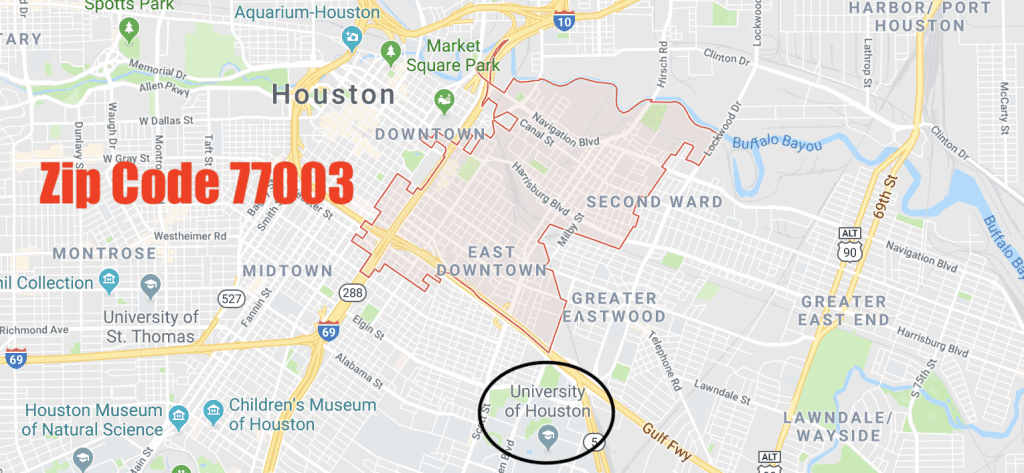
Located just steps away from zip code 77003, The University of Houston campus is located near the third most gentrified area in the U.S. In the last decade and a half, the area has seen:
- A 284 percent increase in home values
- A 71 percent increase in median household income
- And a 443 percent increase in people holding bachelors or higher degrees
Much of the gentrification can be laid at the university’s feet as its student housing footprint has expanded into surrounding neighborhoods over the last decades. According to the Houston Chronicle, “In the portion of the neighborhood closest to downtown, which includes Emancipation Park, median home values increased 176 percent between 2000 and 2013, according to an analysis of census estimates conducted by Governing.”
-
University of Pennsylvania
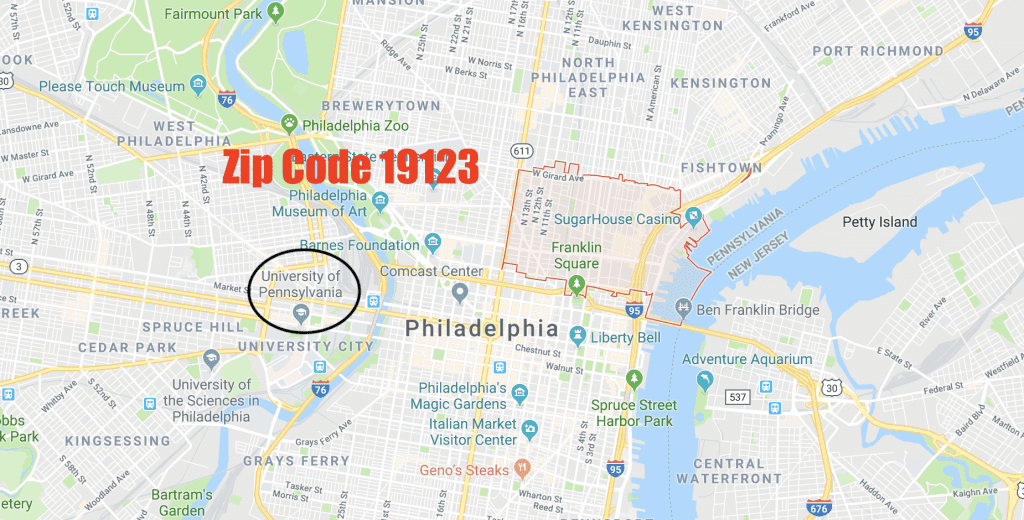
The Wharton School at UPenn is less than five miles outside the fourth most gentrified neighborhood in the country: zip code 19123. This area, over the last 16 years, has noticed:
- A 203 percent increase in home values
- A 95 percent increase in median household income
- And a 230 percent increase in people holding bachelors or higher degrees.
In fact, UPenn has had a complicated history with gentrification over the years, dubbed Penntrification by some. The problem, according to The Daily Pennsylvania, is that in West Philadelphia Penn students’ demand for housing is displacing low-income families. There have even been protests criticizing the university for causing gentrification in the area.
-
Texas Christian University
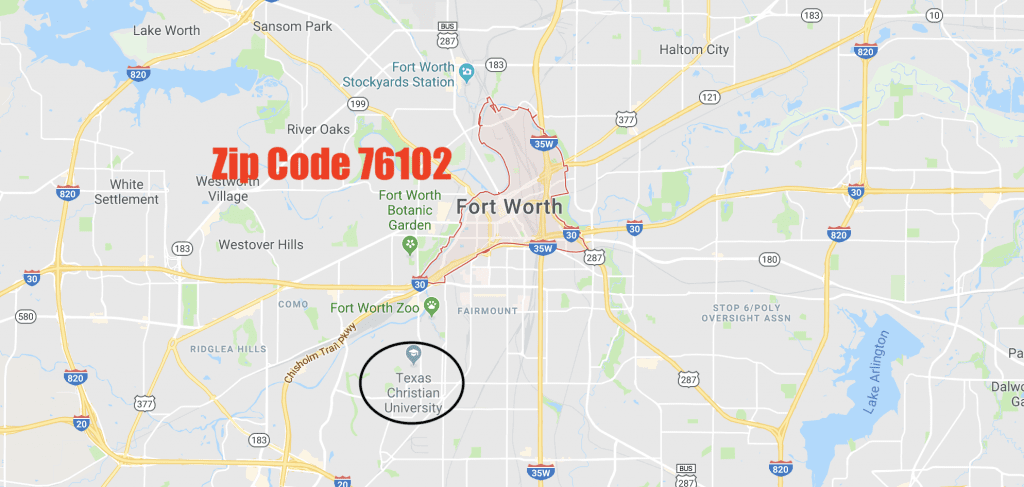
Fort Worth, TX, contains the sixth most gentrified area in the U.S.; just two miles away from Texas Christian University (TCU). Over 16 years, the area has witnessed:
- A 323 percent increase in home values
- A 103 percent increase in median household income
- And a 122 percent increase in people holding bachelors or higher degrees
While Fort Worth’s growth has brought new life to the city’s urban core, it’s also sky-rocketed property values. In particular, the areas around TCU are growing quickly. The university recently completed a $100 million renovation for its football stadium—just five years after its last overhaul, which reportedly cost $164 million.
Will Canadian Customers Adapt to the “Basic” Airline Standard? – Toronto News

Catch up on all the exciting Toronto business schools new from the past week below.
Air Canada, WestJet Offer Cheap Basic Economy Fares for No-Frill Seekers – CBC/Radio-Canada
CBC News sought the expertise of airline analyst and York University Schulich School of Business professor Fred Lazar for an article that examined the intricacies of “basic economy” fares. Though these fares, which offer cheaper seating and even fewer benefits than standard economy, have been popular in the United States, they have only recently been adopted by AirCanada and WestJet.
Though the thought of a cheap flight is tantalizing, basic economy definitely has its drawbacks. Passengers who take advantage of the cheap fares will not earn points (Aeroplan miles or Westjet dollars) with the airlines, cannot change their flights, are ineligible for refunds, and cannot upgrade their seats.
Though some predict the limiting and cost-effective option will see backlash from dissatisfied passengers, Lazar predicts Canadian travelers will adapt quickly to the no-frills travel option.
“Just like when [airlines] started charging for food, charging for blankets, pillows, there were complaints. You rarely get them nowadays,” Lazar said.
Learn more about Canadian airlines’ “basic economy” option here.
Why Students Make Their Ideas Commercial Faster – Forbes
This week, a Forbes article about student entrepreneurs featured a paper authored by three experts, including University of Toronto’s Rotman School of Management professor Joshua Gans. The book, “Control Versus Execution: Endogenous Appropriability and Entrepreneurial Strategy,” whose other authors include Kenny Ching of University College and Scott Stern of MIT Sloan, explored entrepreneurship in technological innovation.
The researchers looked at the successes of student-led and faculty-led entrepreneurial endeavors and found that students prioritize bringing an idea to fruition quickly, rather than obtaining intellectual property assets. Forbes used the findings in the paper to suggest that student entrepreneurs are more successful due to their emphasis on speed over caution.
“Our analysis suggests that student entrepreneurs, with less time and with less access to university intellectual property institutions, are more likely to choose an execution-oriented strategy. Compared to University faculty, who are more likely to be patient, wait for delayed market entry and pursue a control-oriented strategy with formal protection.” – Kenny Ching
Learn more about why student entrepreneurs are often successful here.
New Course Explores Intersection of Business and Community – McMaster’s Brighter World Daily News
First year students in the Integrated Business and Humanities (IBH) program at McMaster University’s Degroote School of Business have been traveling to downtown Hamilton to attend a weekly class at CityLAB. CityLAB is a hub that allows students from community institutions (McMaster University, Redeemer University College, and Mohawk College) to collaborate with municipal staff and engage with the community to tackle pressing projects and issues.

Integrated Business and Humanities meet at the CityLAB space / Photo via dailynews.mcmaster.ca
“It’s a totally new way of learning,” said IBH student Yael Morris. “We’re finding out how we can apply social innovation not just to business, but to our everyday lives so we can build relationships and interact with people in our communities.”
The class, IBH 1AD3 allows students to gain a new perspective on challenges facing their community, and to tackle these challenges from a business perspective. IBH was a collaboration between that Business and Humanities faculties aimed at producing industry leaders apt to address societal issues such as sustainability and business ethics.
“Through a combination of instruction, community-based guest speakers, field trips and projects, students have been learning about the concepts that underpin community engagement and social innovation, as well as about social enterprise and the business models used by community organizations.”
Read more about McMaster’s CityLAB course here.
JHU Carey CityLab MBA Team Working to Develop Historic Home in Downtown Baltimore
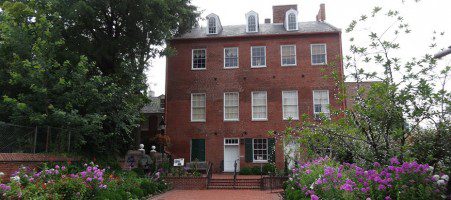
According to an article on the Hub, MADE: In America, a nonprofit organization that supports American industry, is working with five local universities, including the CityLab team from the Johns Hopkins Carey Business School, to transform the Carroll Mansion, a historic home in downtown Baltimore, into the “All American House.” The exhibit’s mission is to boost the profile of the historic, Revolution-era home by showcasing American manufacturers, many of which are from the greater Baltimore area. The exhibit will run for one month. Continue reading…
